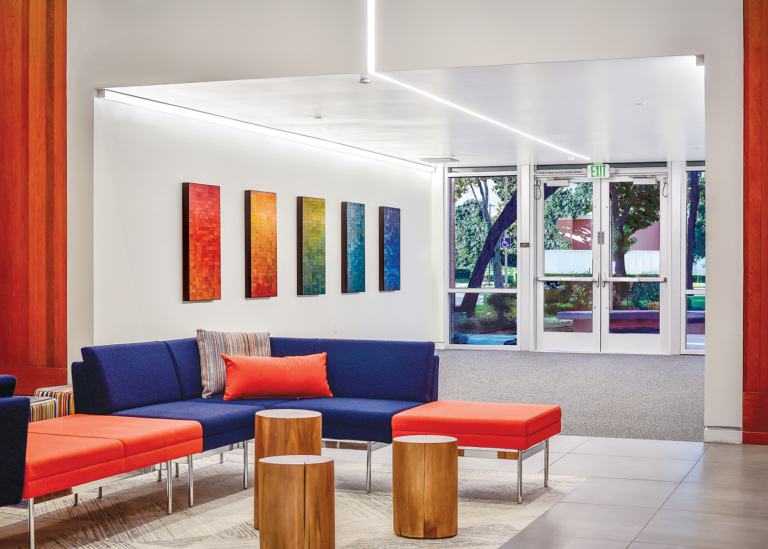Make the Connection between Your Brand and Your Operations
Like any good story, branding is all about intention, execution, and reception. A strong brand represents your organizational values and helps your audience connect those values with a name, building, logo, slogan, or any other established branded elements. Organizations use branding to represent their intended corporate values and identity. How well they communicate and execute those values ultimately determines whether or not their market audience accepts the intended message.
For instance, a financial institution that advertises kind and accommodating service as one of its brand values might use branded communications to get that point across. Their marketing materials would likely include images of friendly bank staff and inviting slogans like, “We’re here to help.”
But your brand stretches beyond digital ads and marketing assets. What happens when a customer or member enters a branch location and doesn’t see those brand values represented? Sure, there may be stacks of pamphlets available that lay out the organization’s “commitment to service,” but without true execution, that message won’t stick.
What if it’s hard to find parking or there aren’t enough tellers available to serve everyone quickly? What if the lobby has harsh lighting or uncomfortable seats? Anyone who visits will use the sum total of their experience to form your brand in their mind, and how they receive that message doesn’t always align with your best intentions.

How Your Headquarters Impacts Your Brand
Apart from current and potential customers or members, any organization seeks to build a distinct brand image among business partners and prospective new hires. For these audiences, an organization’s headquarters is especially important.
This is true symbolically, where an HQ building is expected to be the purest representation of that brand’s values. And it’s true from an operational standpoint, as headquarters often house centralized services and strategic decision-making for an organization.
Does your headquarters building truly represent your brand and values? You have to ask this question first before turning your attention to satellite buildings and branches. In fact, the headquarters space serves as a potent testing ground for new branded elements, design choices, and strategic layouts meant to strengthen and define your brand among any potential audience.
The headquarters is where top-level strategic decision-makers spend most of their time. Whether or not the stakeholders at your HQ recognize it, they are already invested in the kind of branded experience the building creates for everyone who walks through the front door.
How Can We Know a Headquarters Building Represents Brand Values?
First, you have to know what your brand’s values are. Most organizations have written mission statements or something similar that lays out the entire purpose of their whole operation. If it’s been a while since you have reviewed your own stated values, it’s probably time to revisit and revise them to fit your current market and goals.

Large or small, any changes you make to your intended brand values demand outward execution of those values on an organizational level. As we’ve discussed, a brand is more than just marketing. A brand should communicate the actual experience and value customers and partners receive by working with your organization.
At NewGround, we have these kinds of discussions all the time. Regardless of the challenges our clients face, we always start with strategy. We help our clients define their goals, set clear markers for success and build a process that delivers a clear branded experience.
As organizations seek to solidify, refresh, and communicate their brands through physical spaces, the headquarters has a special place in the process. It is a powerful symbol for your brand and a practical venue for the most vital branded experiences.
Connect with NewGround to learn more about what we do and the many ways we’ve helped organizations define and embody their brand through headquarters spaces.